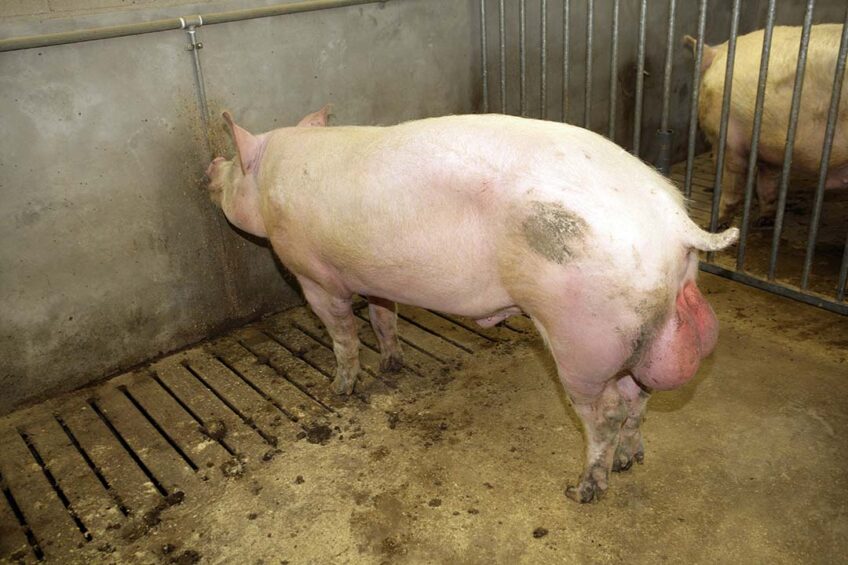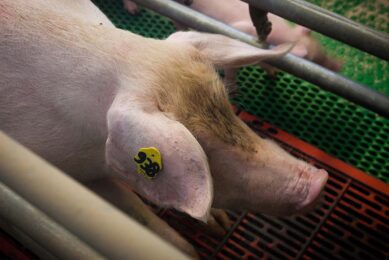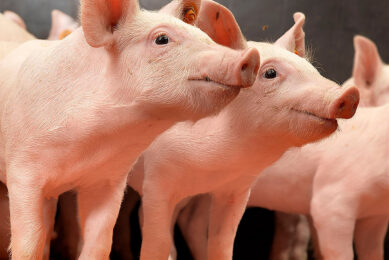Boars and their hormones

The majority of male piglets born in commercial production are castrated, writes welfare expert Dr Irene Camerlink. Concerns about the welfare of male piglets have resulted in some countries requiring the use of anaesthesia and/or painkillers, while in other countries boars are immunocastrated or raised as entire males. This improves the short-term welfare for male piglets, but what about the long-term consequences?
The main aim of castration is to reduce the boar taint that occurs in the meat of entire males. Boar taint is an aversive smell that can occur when the meat is heated. It occurs only in a small percentage of boars before puberty (~ 70 kg), and can be influenced by genetics, nutrition and management.
Production benefits of entire males
Much research effort has gone into reducing the boar taint compounds (androstenone, skatole and indole) or detecting them at the slaughterhouse, in order to be able to stop castrating. Raising entire males has production benefits, as boars have a better feed conversion ratio and meat quality than barrows.
Mounting, also referred to as jumping or riding, relates to dominance after a fight but can also be sexual
Negative effects on welfare
However, keeping entire males may also have negative effects on welfare. Entire males may show more play and a better growth performance than castrates. Up to around 4 to 5 months this is a clear benefit. After that, mounting behaviour starts to increase in intensity. Mounting, also referred to as jumping or riding, relates to dominance after a fight but can also be sexual.
Intense screaming
Even before weaning, pigs show mounting behaviour. But from puberty there will be more sexual mounting, characterised by hip thrusting and ejaculation. If pigs are only checked twice a day and the doors are kept closed for the rest of the time, the change in mounting behaviour may not be so apparent. However, the intense screaming heard when spending more time near the pens with boars will reveal the situation.
Research has shown that groups of entire males may have more lameness and injuries from mounting and show more aggression. In severe or unfortunate cases, this can lead to mortality. If entire males are kept together with gilts, there may be unwanted pregnancies at slaughter. Keeping entire males can therefore have negative welfare consequences at a later stage.
Reducing pig aggression
While no solutions have been proposed to reduce mounting behaviour, there are several methods to reduce pig aggression, such as avoiding regrouping and early life socialisation. Providing more space also allows the victim more opportunity to escape. Giving enrichment materials that they can be busy with for part of the day, such as straw, hay or wood, also diverts the attention and reduces mounting – at least temporarily.
Castrating or not?
So, should we castrate or not? For better production performance: do not castrate, depending, of course, on the slaughterhouse or export demands. For better welfare: do not castrate if you are able to split sexes and keep the males on a space allowance of minimum 1.0–1.3 m2. If you keep pigs at a smaller space allowance than this, it will be better for long-term welfare to castrate the male piglets with anaesthesia and analgesia, or use immunocastration.
Pain relief
Providing proper pain relief does take time and money but helps the piglet at a critical time when it is essential that it recovers as quickly as possible. As with any intervention, keep the long-term consequences in mind when making a management decision.











